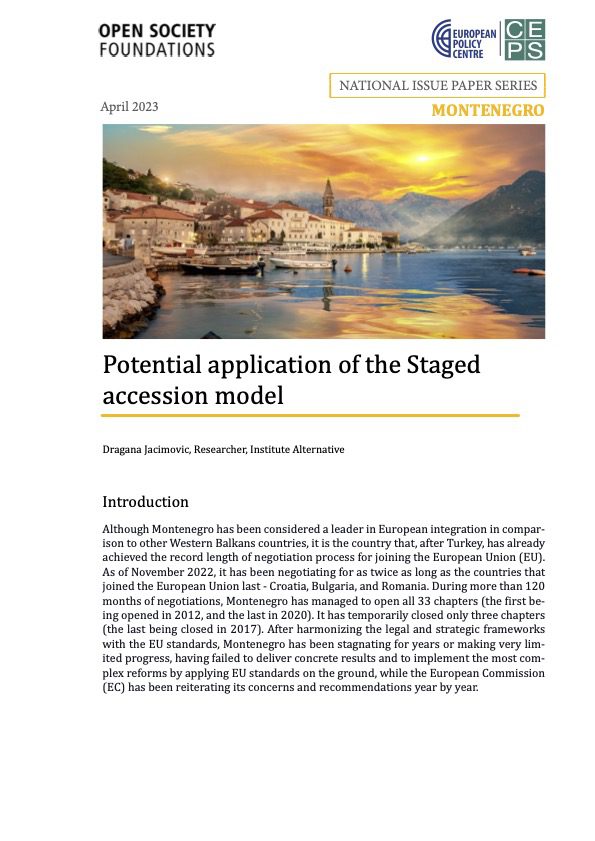After harmonising the legal and strategic framework with the EU standards, Montenegro has been stagnating for years or making very limited progress, having failed to deliver concrete results and to implement the most complex reforms by applying EU standards on the ground, while the European Commission (EC) has been reiterating its concerns and recommendations year by year.In order to address this stagnation, it is necessary to overcome the existing binary model, according to which most of the EU integration benefits occur only after full membership, without sufficient incentives to reward reforms on the way or to sanction the lack of progress. An idea that is more often mentioned in this context is the introduction of the Model of staged accession to the EU, which was developed by the European Policy Centre (CEP) in Belgrade and the Center for European Policy Studies (CEPS) in Brussels.
This document will analyse whether and in what way the proposed model could be applied in Montenegro. First of all, the document tries to show what are the key shortcomings of the current Enlargement process, as well as whether the proposed model would stir up or solve some specific problems in the case of Montenegro. The document also analyses key stakeholders and their potential role in deciding on the application of this model within Montenegro’s EU talks. A special section of this document is the assessment of the level of preparedness of Montenegro to join the EU, expressed in figures, by quantifying the assessment from the most recent EC country report. Finally, recommendations that Montenegro must fulfill in order to meet the conditions for entering one of the stages and move from one stage to another in line with the proposed Staged accession model, have been singled out.







